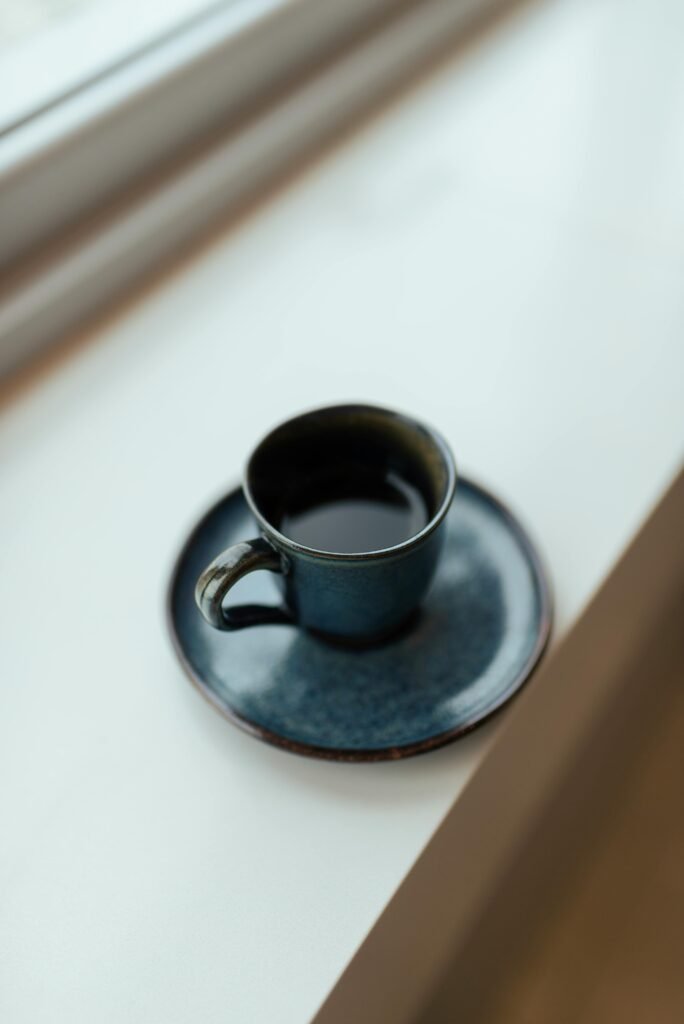If you’ve ever wondered how to give your circulation a boost, look no further than high socks. These versatile wardrobe staples do much more than just make a fashion statement – they actually play a key role in improving your blood flow. By gently compressing the muscles in your lower legs, high socks help to promote circulation, prevent pooling of blood, and reduce the risk of swelling and discomfort. So, whether you’re an athlete looking to enhance performance or simply someone who wants to maintain optimal blood flow, high socks are the secret weapon you’ve been searching for.

This image is property of images.pexels.com.
What are high socks?
Definition
High socks, also known as knee-high or over-the-knee socks, are a type of hosiery that extends above the knee, providing coverage for the lower leg. They are typically made from a stretchy and breathable fabric such as cotton, nylon, or a blend of materials. High socks come in various lengths and designs, ranging from simple solid colors to elaborate patterns and textures. They are commonly worn for fashion purposes, but they also offer several benefits for circulation and overall leg health.
Length and design
High socks can vary in length, with some reaching just above the knee, while others extend all the way up to the thigh. The choice of length depends on personal preference and the desired level of coverage and support. In terms of design, high socks come in a wide array of options. From classic and minimalist styles to bold and quirky patterns, there is a design to suit every individual’s taste. Some high socks also feature additional features such as cushioning or reinforced sections for added comfort and durability.
How do high socks affect circulation?
Compression
One of the key factors that make high socks effective for circulation is their compression. High socks are designed to apply gentle pressure to the leg, helping to improve blood flow and prevent the pooling of blood in the lower extremities. The compression exerted by high socks can enhance the efficiency of the circulatory system, promoting healthier blood circulation.
Improved blood flow
By applying external pressure, high socks help to stimulate blood flow in the legs. The compression helps to push the blood back towards the heart, aiding in the return of deoxygenated blood and the delivery of oxygenated blood to the muscles and tissues. This improved blood flow can lead to a variety of benefits, including reduced swelling, decreased risk of blood clots, and enhanced overall leg health.
Prevention of blood pooling
When blood is unable to flow properly, it can accumulate or pool in the lower legs and feet, leading to discomfort, swelling, and potential health issues. High socks help to prevent blood pooling by providing support and compression to the leg muscles and veins, assisting in the efficient return of blood to the heart. By reducing the pooling of blood, high socks can alleviate symptoms such as heaviness, achiness, and fatigue in the legs.
Reduced swelling and edema
Swelling, also known as edema, can occur due to conditions such as poor circulation, prolonged standing or sitting, or certain medical conditions. High socks can effectively reduce swelling by promoting better blood flow and preventing fluid accumulation in the legs. By wearing high socks, you can help alleviate the discomfort, pain, and aesthetic concerns associated with swelling, allowing you to go about your daily activities with greater comfort and confidence.

This image is property of images.pexels.com.
Benefits of high socks for circulation
Prevention of varicose veins
Varicose veins are enlarged, swollen, and twisted veins that commonly occur in the legs and feet, caused by weakened or damaged vein walls. High socks with moderate compression can help prevent varicose veins by promoting better blood circulation and reducing the pressure on the veins. By wearing high socks regularly, you can maintain healthier veins and minimize the risk of developing varicose veins.
Reduced risk of deep vein thrombosis
Deep vein thrombosis (DVT) is a serious condition where blood clots form in the deep veins, often in the legs. DVT can lead to potentially life-threatening complications if a clot breaks loose and travels to the lungs. Wearing high socks with proper compression can decrease the risk of DVT by improving blood flow and preventing blood clot formation. High socks are particularly beneficial for individuals who are at higher risk of developing blood clots, such as those who have recently undergone surgery or have a history of DVT.
Decreased leg fatigue and pain
If you frequently experience leg fatigue or pain, especially after long periods of standing or physical activity, high socks can provide much-needed relief. The compression provided by high socks helps to reduce muscle vibration and fatigue, minimizing the strain on your leg muscles. By wearing high socks, you can enjoy increased comfort and energy in your legs, allowing you to stay on your feet for more extended periods without discomfort or exhaustion.
Enhanced athletic performance
High socks have gained popularity among athletes and sports enthusiasts due to their potential to enhance performance. The compression provided by high socks can improve blood circulation, delivering more oxygen and nutrients to the muscles. This increased supply of oxygen can enhance muscle endurance, reduce the buildup of lactic acid, and accelerate recovery after strenuous physical activity. By incorporating high socks into your athletic routine, you may experience improved performance and less muscle soreness.
Choosing the right high socks for circulation
Compression level
When selecting high socks for circulation, it is crucial to consider the level of compression they provide. Compression levels are measured in millimeters of mercury (mmHg) and can range from mild (15-20 mmHg) to moderate (20-30 mmHg) to firm (30-40 mmHg) compression. Mild compression is suitable for general leg health, while moderate to firm compression is recommended for individuals with specific circulation concerns or medical conditions. It is important to consult a healthcare professional to determine the appropriate compression level for your needs.
Proper fit
To ensure maximum effectiveness, high socks should fit properly. They should be snug but not excessively tight, allowing for unrestricted movement and maintaining optimal compression. It is essential to measure the circumference of your calf and the length of your leg to find the right size of high socks. Most brands provide sizing charts to guide you in selecting the appropriate size. If you are unsure, it is advisable to consult with a healthcare professional or a specialist in compression garments.
Material and breathability
The choice of material is another factor to consider when choosing high socks for circulation. Look for socks made from breathable and moisture-wicking fabrics such as nylon, spandex, or cotton blends. These materials help to keep your legs cool and dry, reducing the risk of discomfort or irritation. Additionally, consider the overall quality and durability of the socks to ensure they maintain their compression and effectiveness over time.
Ease of wear
High socks should be easy to put on and take off, especially if you plan to wear them daily or during physical activity. Look for socks with features such as a wide top band, reinforced heel and toe, or a zipped or open-toe design that facilitates easier wearing and removal. Finding high socks that are convenient to wear will encourage regular use and maximize the benefits they provide for circulation.

This image is property of images.pexels.com.
Common misconceptions about high socks for circulation
Only for elderly or immobile individuals
One common misconception about high socks for circulation is that they are solely intended for elderly individuals or those with limited mobility. While high socks are undoubtedly beneficial for these populations, they can be advantageous for people of all ages and activity levels. Whether you’re a young adult spending hours at a desk job or an athlete looking to improve performance and enhance recovery, high socks can offer significant benefits for your leg health and overall well-being.
Not fashionable or stylish
Another misconception about high socks for circulation is that they are unfashionable or unstylish. In reality, high socks come in a wide range of trendy and fashionable designs, making it easy to incorporate them into your daily outfit choices. From simple solid colors that match any attire to bold patterns and textures that add a touch of personality, high socks can be a fashionable accessory that complements your style while providing the circulation benefits you need.
Uncomfortable to wear
Some may believe that high socks are uncomfortable to wear, particularly for extended periods. However, with advancements in materials and design, high socks are now available in softer, more breathable, and comfortable options. High-quality high socks with proper compression can fit seamlessly into your daily routine without causing discomfort or irritation. It may take some time for your legs to adjust to the sensation of compression, but with gradual adaptation, high socks can become a comfortable and beneficial addition to your wardrobe.
Tips for wearing high socks for circulation
Gradual adaptation
If you are new to wearing high socks for circulation or compression garments in general, it is recommended to start with shorter periods of wear and gradually increase the duration. This allows your legs to adapt to the compression and ensures maximum comfort. Begin by wearing high socks for a few hours each day and gradually extend the duration until you can comfortably wear them throughout the day. Pay attention to any signs of discomfort or irritation and adjust accordingly.
Proper hygiene and care
To maintain the effectiveness and longevity of your high socks, it is essential to practice proper hygiene and care. Wash the socks regularly according to the manufacturer’s instructions, using gentle detergent and cold water. Avoid using bleach or fabric softeners, as they can deteriorate the elasticity of the socks. It is recommended to air-dry the socks rather than using a dryer to prevent any damage or shrinkage. Regularly inspect your socks for any signs of wear or deterioration and replace them as needed to ensure optimal compression.
Wear during specific activities
While high socks can be worn throughout the day, they may be particularly beneficial during certain activities that put additional strain on your legs. Consider wearing high socks when engaging in activities such as prolonged standing, sitting for extended periods, or long-distance travel. Similarly, high socks can provide added support and protection during physical exercise or sports activities, helping to reduce muscle fatigue and enhance performance.
Consultation with a healthcare professional
If you have specific circulation concerns or medical conditions, it is recommended to consult with a healthcare professional before incorporating high socks into your routine. They can provide personalized advice based on your individual needs and help you determine the appropriate compression level and type of high socks. A healthcare professional can also address any questions or concerns you may have, ensuring you make an informed decision that supports your overall leg health.
How to incorporate high socks into your daily routine
Footwear choice
When wearing high socks, it is important to choose appropriate footwear that accommodates the length and thickness of the socks. Opt for shoes or boots with ample room and adjustable features such as laces or straps to accommodate the additional bulk of the high socks. Avoid shoes that are too tight or restrict circulation, as they can counteract the benefits of wearing high socks. Find footwear options that are comfortable, supportive, and allow for proper movement of your feet and ankles.
Workout and exercise
High socks can be particularly beneficial during workouts and exercise routines. Whether you’re running, cycling, weightlifting, or practicing yoga, wearing high socks can assist in muscle support, reduce post-workout fatigue, and aid in recovery. Select high socks that offer the appropriate compression level for your exercise intensity and duration. The enhanced blood flow and support provided by the socks can enhance your performance and overall enjoyment of physical activity.
Travel and long periods of inactivity
Long periods of inactivity, such as during air travel or extended periods of sitting, can contribute to poor circulation and leg discomfort. Wearing high socks during these times can help promote healthier blood flow and reduce the risk of swelling or blood clots. Consider wearing high socks during flights, road trips, or desk-bound work to support your leg health and enhance comfort during prolonged periods of inactivity.
Occupational use
If your occupation requires prolonged standing or walking, high socks can offer significant benefits for your leg health and overall well-being. Jobs in industries such as healthcare, hospitality, retail, or manufacturing often involve long hours on your feet, increasing the risk of leg fatigue, swelling, and discomfort. By wearing high socks, you can provide support and compression to your legs, helping to alleviate these symptoms and promote healthier circulation throughout the workday.
Alternative methods for improving circulation
Exercise and physical activity
Regular exercise and physical activity are key components of maintaining healthy circulation. Engaging in activities such as walking, jogging, swimming, or cycling helps to stimulate blood flow, strengthen the muscles in your legs, and enhance overall cardiovascular health. By incorporating physical activity into your daily routine, you can promote better circulation and reduce the risk of circulation-related issues.
Healthy diet and hydration
A balanced and nutritious diet plays a vital role in supporting circulatory health. Consuming foods rich in nutrients, such as fruits, vegetables, whole grains, and lean proteins, helps to maintain healthy blood vessel function and reduce the risk of conditions that can impair circulation. Additionally, staying hydrated by drinking an adequate amount of water throughout the day promotes healthy blood viscosity, facilitating better blood flow.
Avoiding prolonged sitting or standing
Prolonged sitting or standing can impede proper blood circulation in the legs. To mitigate the negative effects of sedentary behavior, it is crucial to take regular breaks and incorporate movement into your day. If your job requires long periods of sitting, try to stand up and walk around every hour. Conversely, if your occupation involves standing for extended periods, take breaks to sit and elevate your legs whenever possible. These simple actions can help maintain healthy blood flow and prevent circulation-related issues.
Elevating legs
Elevating your legs can assist in improving circulation, especially after prolonged periods of sitting or standing. When resting or sleeping, elevate your legs by propping them up with pillows or using leg wedges. Elevating your legs above the level of your heart helps to alleviate pressure on the veins and promotes better blood flow back to the heart. By incorporating leg elevation into your daily routine, you can support overall leg health and prevent circulation-related discomfort.
Potential risks and precautions
Allergic reactions and skin irritation
While rare, some individuals may experience allergic reactions or skin irritation when wearing high socks. This can be due to a sensitivity to the materials or dyes used in the socks. If you notice any itching, redness, or rash, discontinue wearing the socks and consult a healthcare professional. They can help identify the cause of the reaction and recommend alternative options or treatments.
Contraindications for certain medical conditions
Certain medical conditions, such as peripheral arterial disease (PAD), diabetes, or congestive heart failure, may require caution or avoidance when it comes to wearing high socks for circulation. These conditions may involve compromised blood flow or require specific management strategies. It is crucial to consult with a healthcare professional, who can provide personalized advice and guidance based on your medical history and condition.
After surgical procedures
If you have recently undergone a surgical procedure, it is important to follow your healthcare professional’s recommendations regarding the use of high socks for circulation. Depending on the type of surgery and individual circumstances, high socks may be contraindicated or require specific handling and monitoring during the recovery period. Always consult with your healthcare provider before incorporating high socks into your post-surgical routine.
Consultation with a healthcare professional
Before starting to wear high socks for circulation or if you have any concerns or questions, it is advisable to consult a healthcare professional. They can assess your specific needs, provide guidance on the appropriate compression level and style, and address any potential risks or precautions relevant to your individual circumstances. A healthcare professional can offer personalized advice and ensure that wearing high socks is safe and beneficial for your leg health.
Conclusion
High socks are a simple and effective solution for improving circulation and promoting healthier leg health. With their compression and support, high socks aid in improved blood flow, prevention of blood pooling, reduced swelling, and the prevention of varicose veins and deep vein thrombosis. These benefits are not limited to a specific age group or mobility level, as high socks can benefit individuals of all ages and activity levels. By selecting the right high socks for circulation, incorporating them into your daily routine, and following appropriate precautions, you can enjoy the widespread benefits of improved leg circulation, reduced leg fatigue, and enhanced overall well-being. Make high socks a fashion-forward and health-conscious choice for your legs today!
